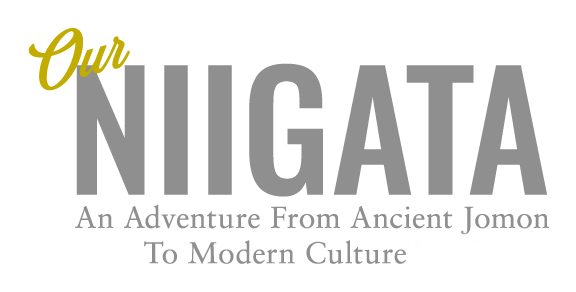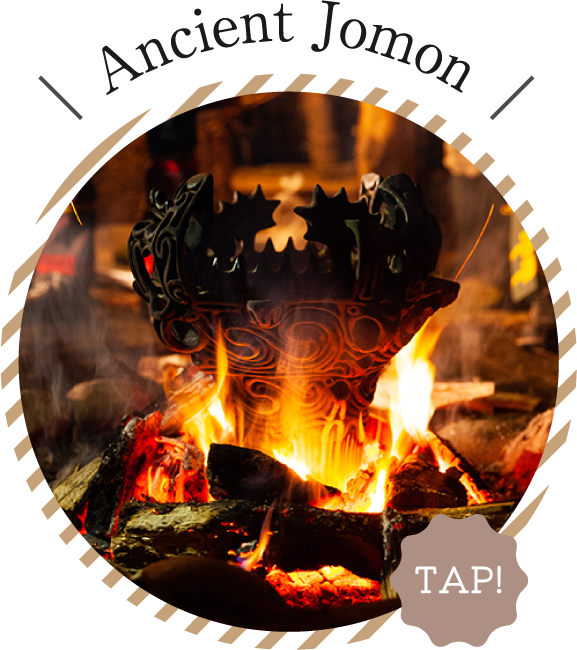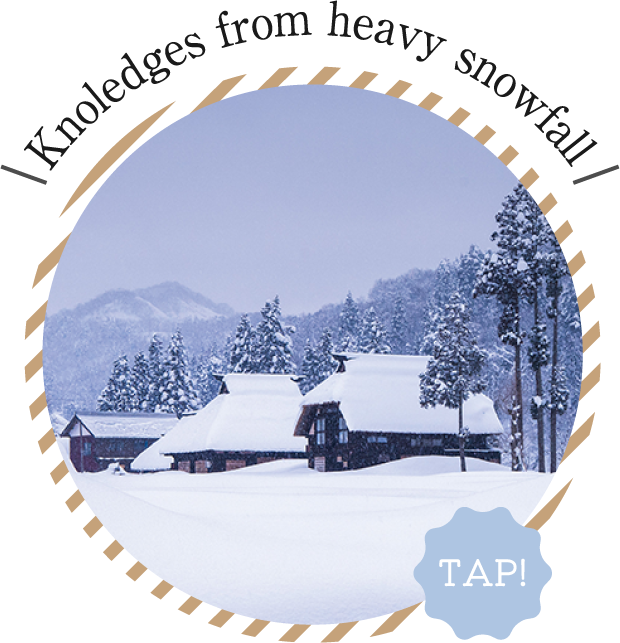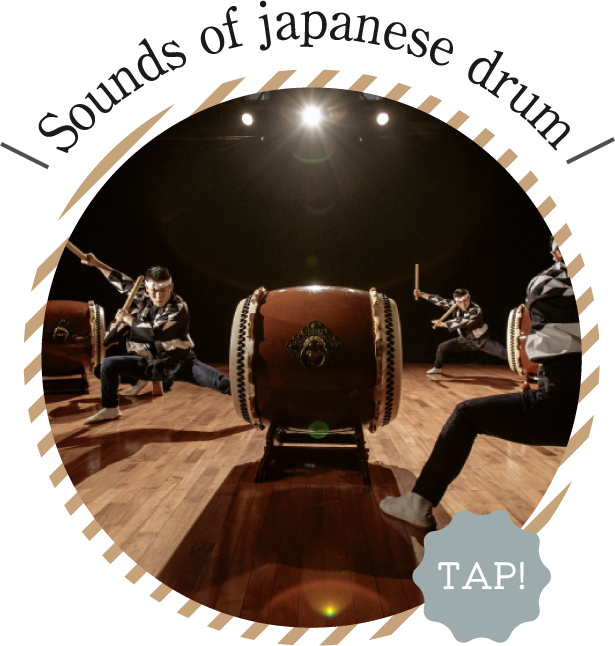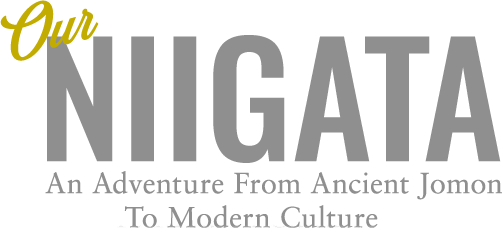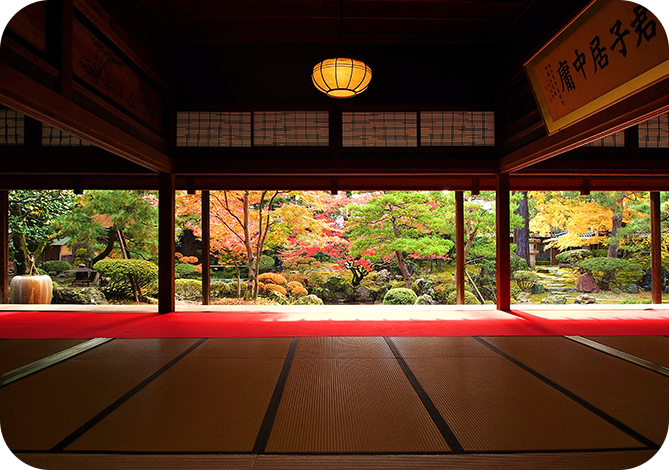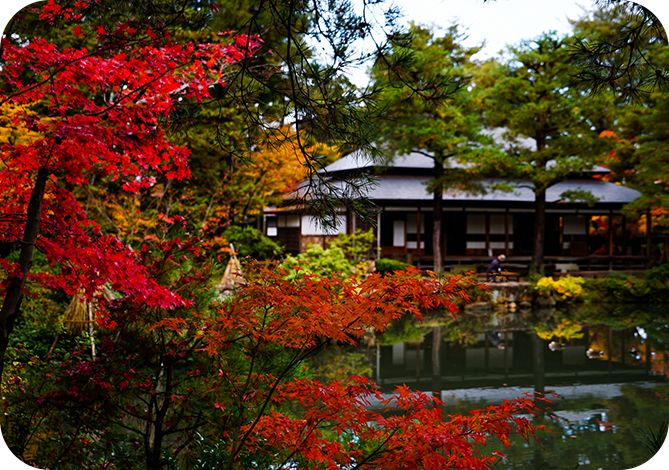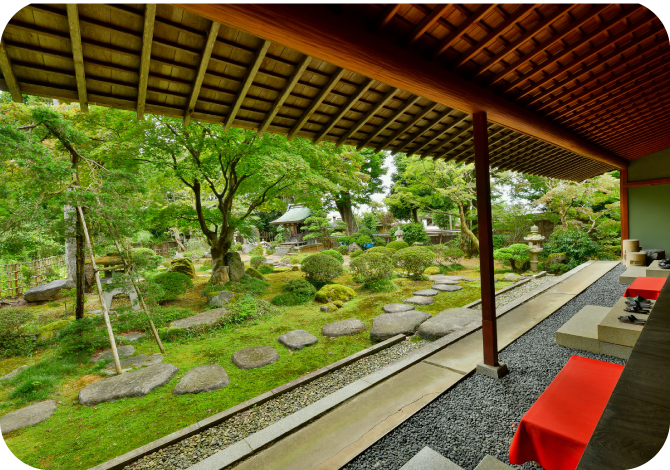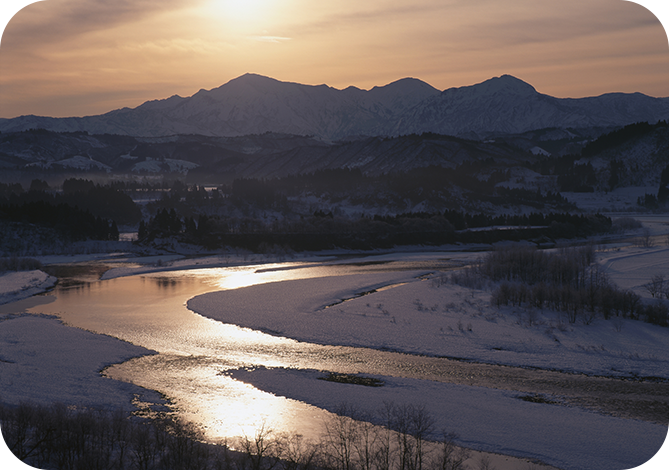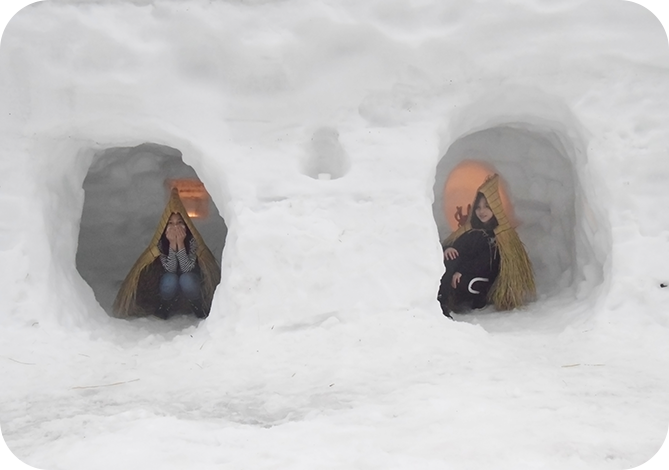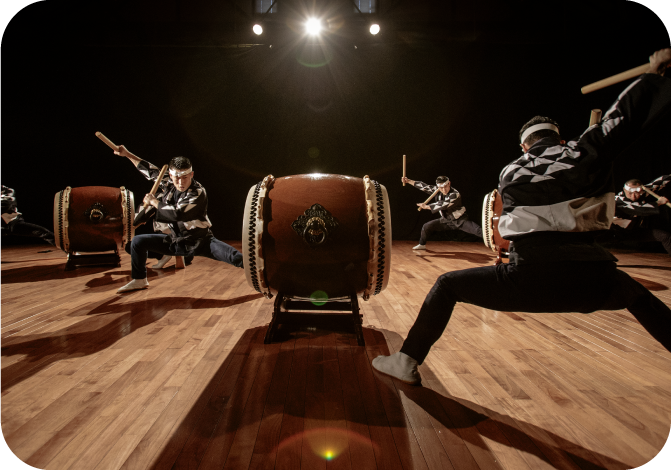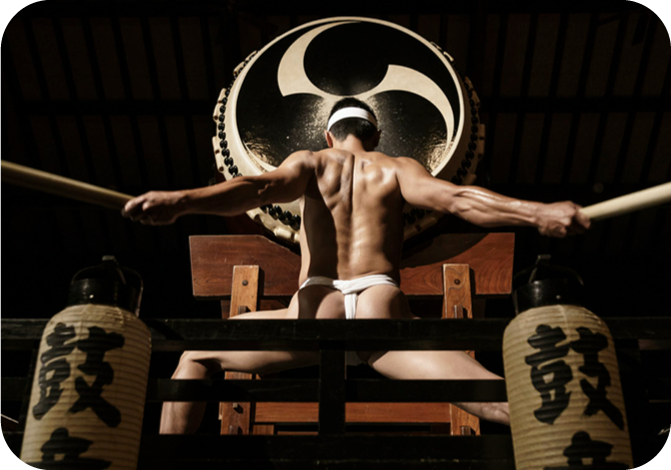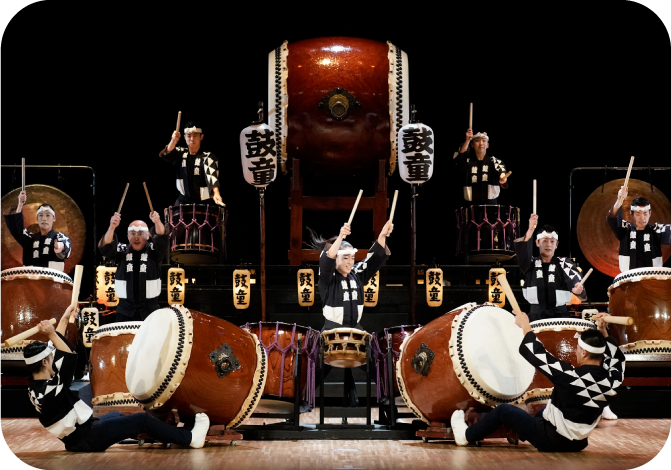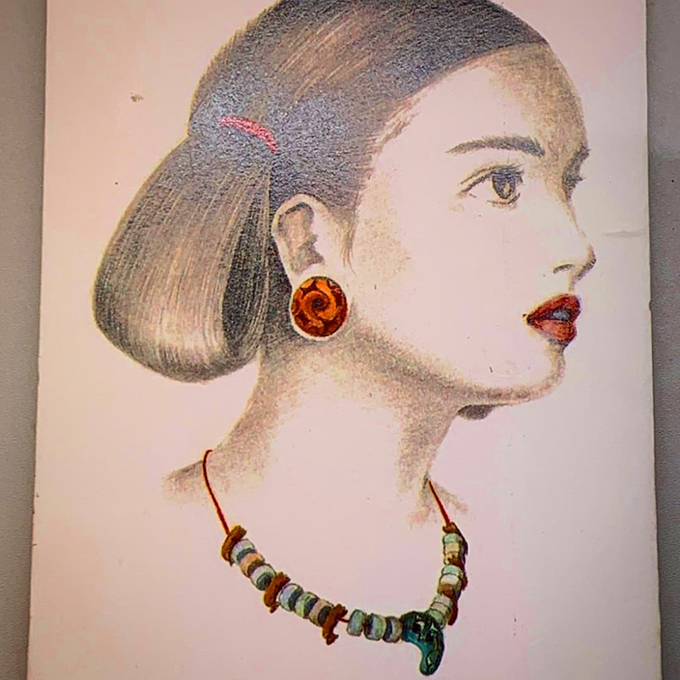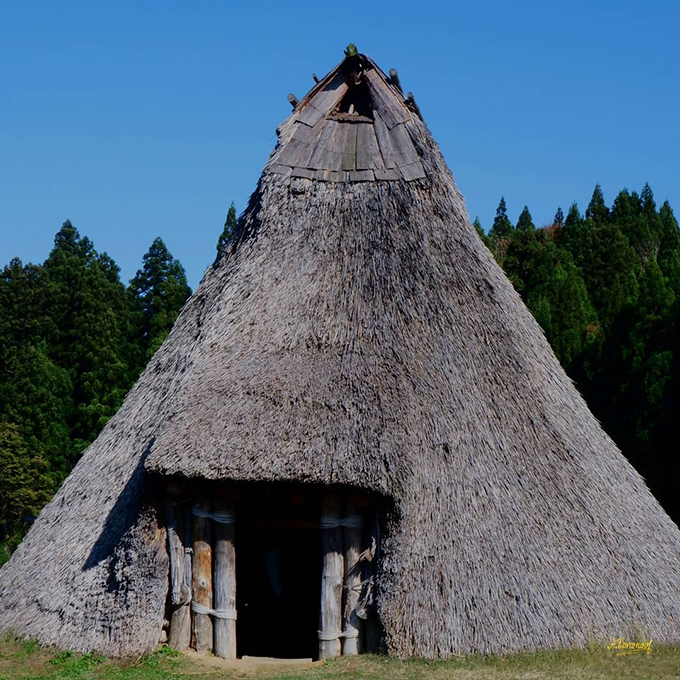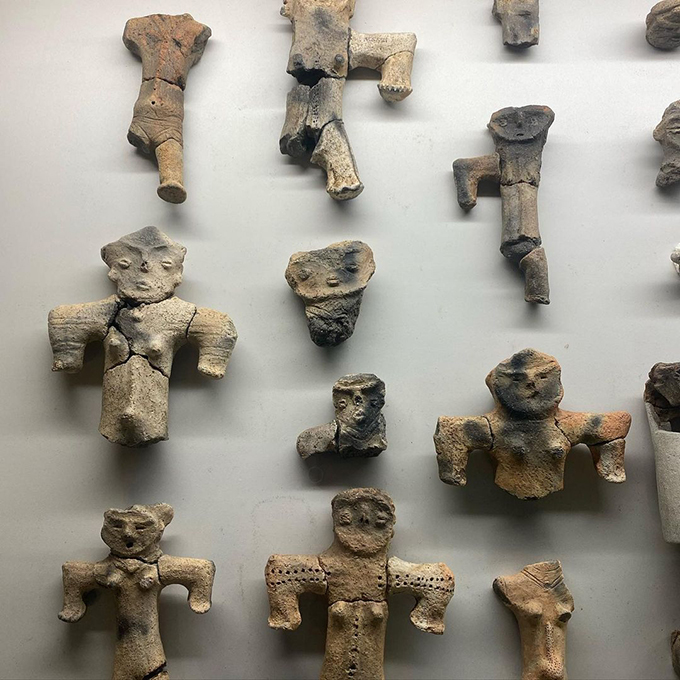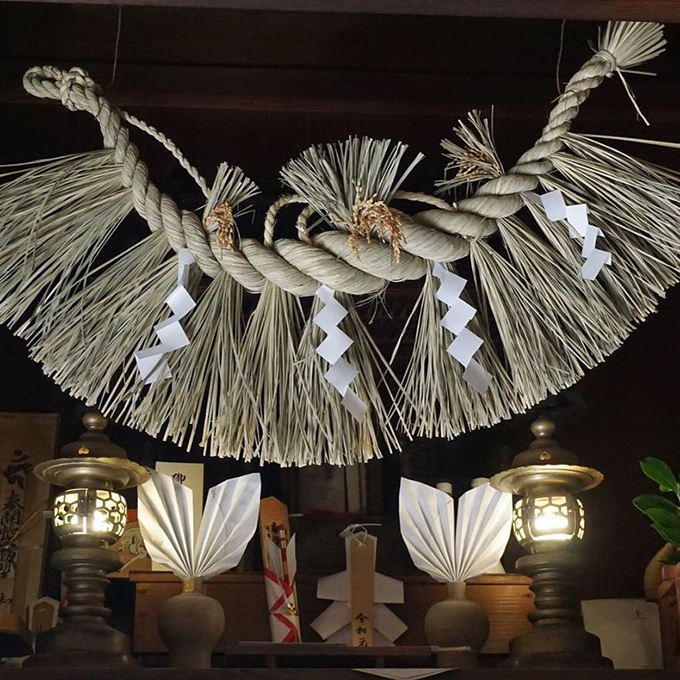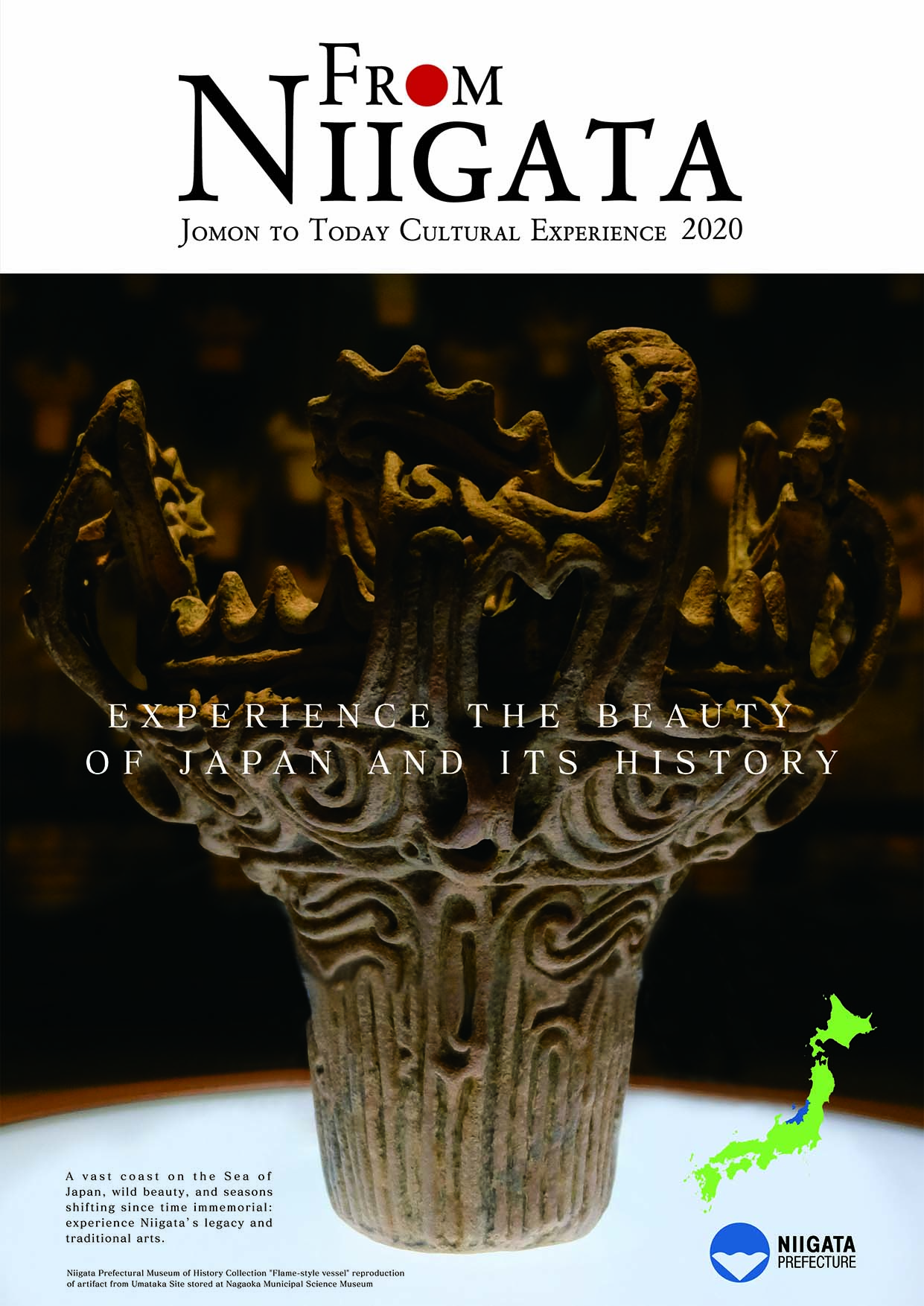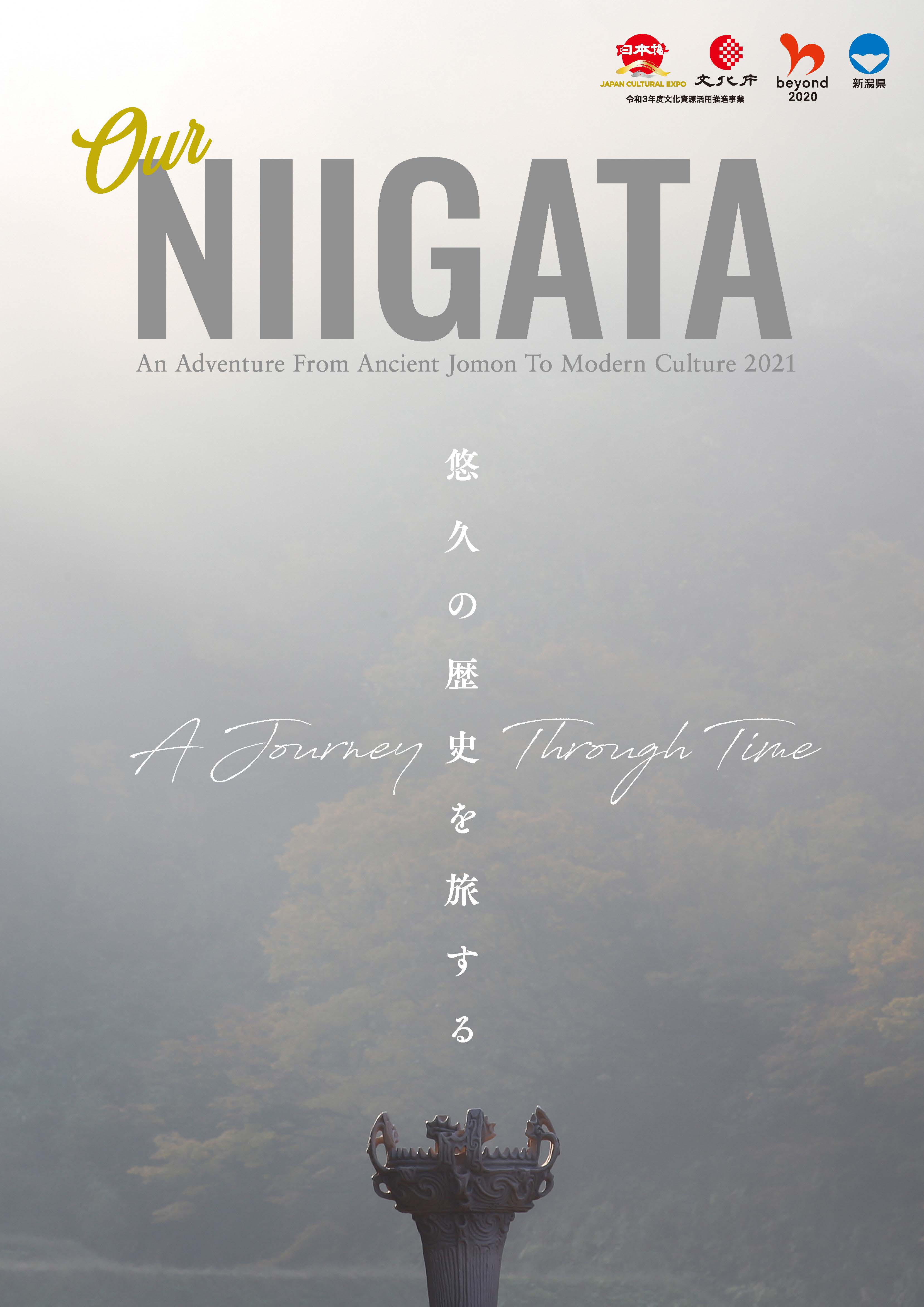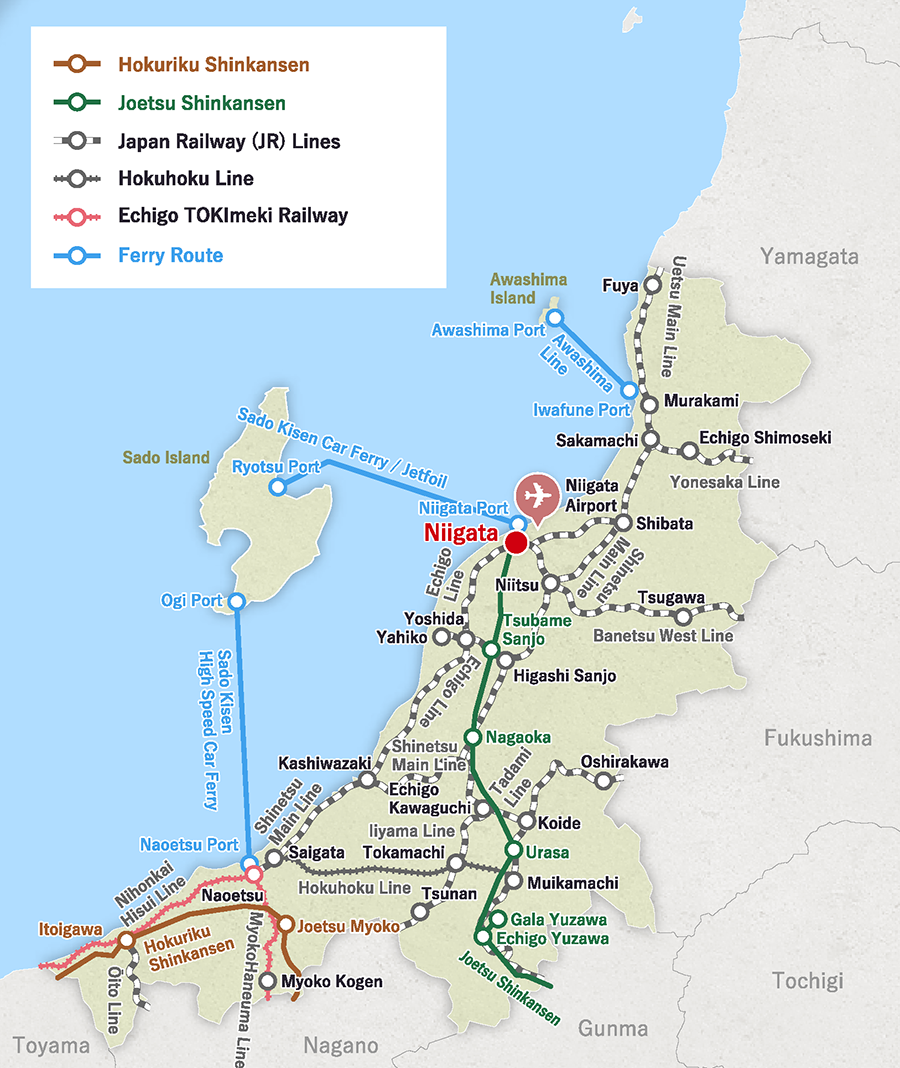
Ancient Jomon culture
A glimpse of life
-
A message through time
Five thousand years ago, the ancient Jomon people developed a tool that combines practicality with artistry - a clay vessel with a decoration that resembles a burning flame. The ""flame pottery"" of the Jomon period, which has been excavated in large numbers in the Shinano River basin in Niigata Prefecture, can be said to be the origin of modern Japanese culture.
This is a tour where you can gleam advice to use in the present from the steady and fulfilling lives of the Jomon people.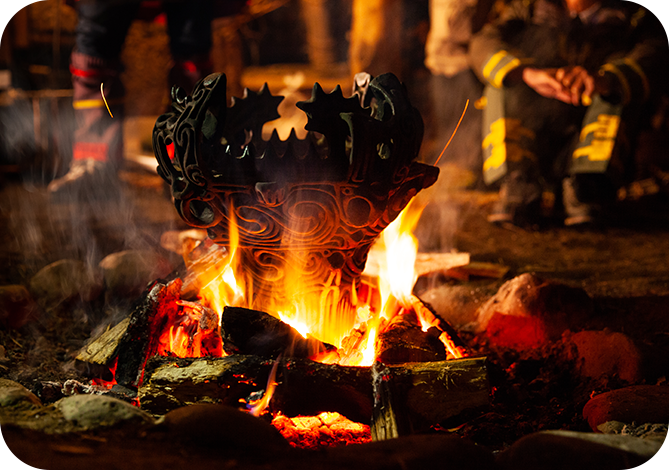
Jomon world: Exploring Ancient
Niigata culture -
The "flame-pottery" is a pottery reminiscent of a burning flames. It is a national treasure that combines practicality with artistry. This style was developed in Middle Jomon period.
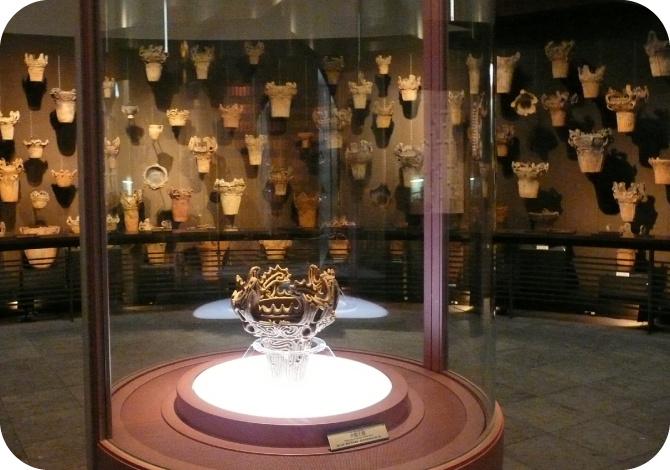
About "flame-pottery"
-
Since ancient times people of Niigata have been nurtured by mountains, rivers, heavy snowfalls, and delicious seafood. The wisdom of processing and preserving food, the variety of local cuisine, the quality of textiles (for example, angin that is rooted in Jomon period), and creativity are all rooted in this extreme environment. The culture that developed in the ancient Jomon period is the foundation of modern Japanese culture. It reaches from the past, to give us hints for the future!
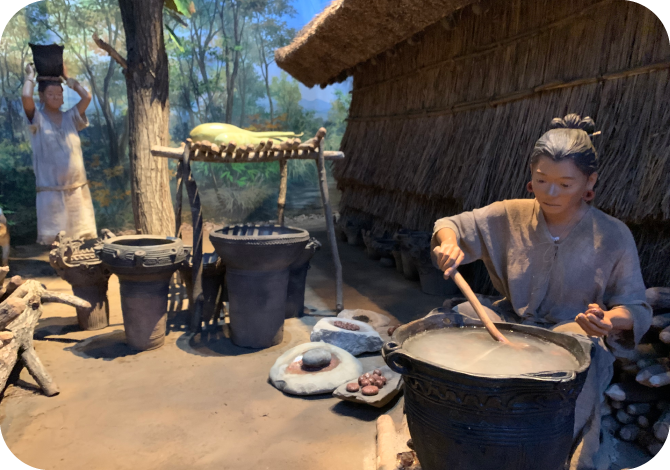
Learning from the Jomon way of life
-
Jomon people survived off the rich natural environment in Niigata by hunting, gathering, and fishing. Step into their varied world and experience the wisdom of their seasonal lives. Feel the richness and harshness of nature and the warmth of the Jomon people as you explore their world in a full-scale diorama. To understand these people even better, make a Jomon-style magatama. Spend the day surrounded by the root culture of Japan!
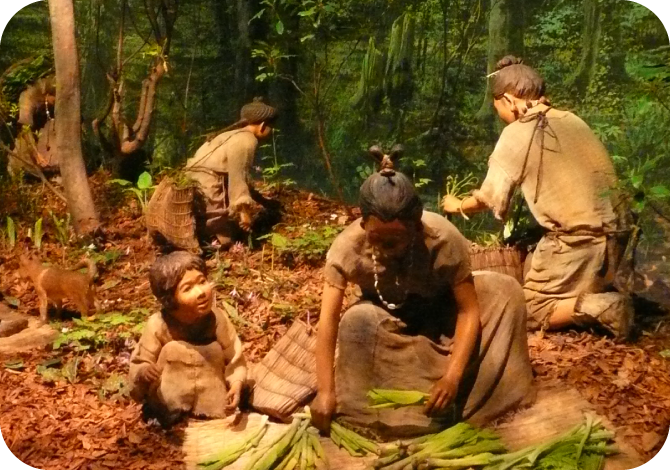
Walking through Ancient Jomon
-

Jomon world:
Exploring Ancient
Niigata cultureA message through time
Five thousand years ago, the ancient Jomon people developed a tool that combines practicality with artistry - a clay vessel with a decoration that resembles a burning flame. The ""flame pottery"" of the Jomon period, which has been excavated in large numbers in the Shinano River basin in Niigata Prefecture, can be said to be the origin of modern Japanese culture.
This is a tour where you can gleam advice to use in the present from the steady and fulfilling lives of the Jomon people.
-

About "flame-pottery"
The "flame-pottery" is a pottery reminiscent of a burning flames. It is a national treasure that combines practicality with artistry. This style was developed in Middle Jomon period.
-

Learning from the
Jomon way of lifeSince ancient times people of Niigata have been nurtured by mountains, rivers, heavy snowfalls, and delicious seafood. The wisdom of processing and preserving food, the variety of local cuisine, the quality of textiles (for example, angin that is rooted in Jomon period), and creativity are all rooted in this extreme environment. The culture that developed in the ancient Jomon period is the foundation of modern Japanese culture. It reaches from the past, to give us hints for the future!
-

Walking through
Ancient JomonJomon people survived off the rich natural environment in Niigata by hunting, gathering, and fishing. Step into their varied world and experience the wisdom of their seasonal lives. Feel the richness and harshness of nature and the warmth of the Jomon people as you explore their world in a full-scale diorama. To understand these people even better, make a Jomon-style magatama. Spend the day surrounded by the root culture of Japan!
